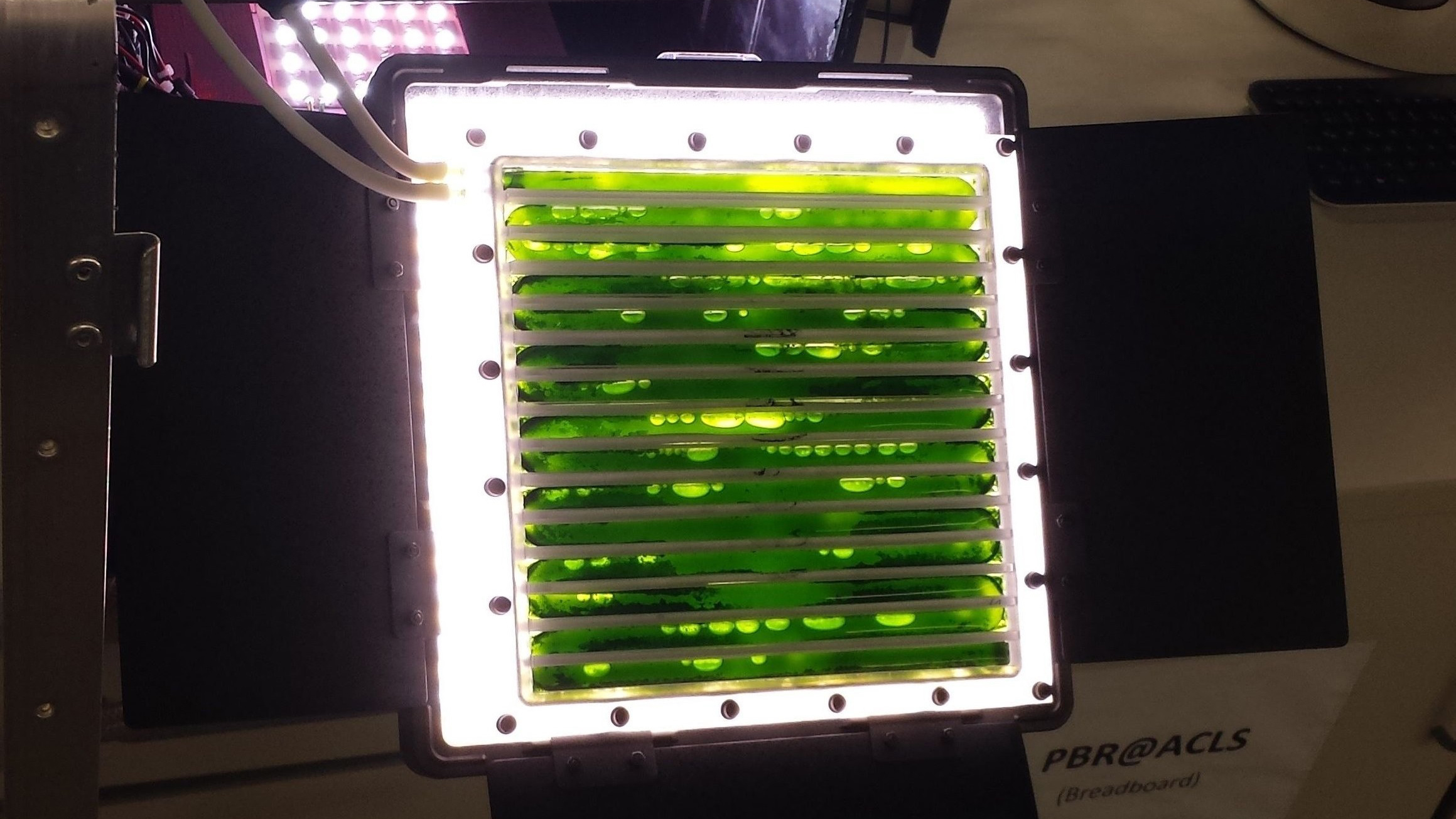Algae 'Bioreactor' on Space Station Could Make Oxygen, Food for Astronauts
Astronauts on the International Space Station will begin testing an innovative algae-powered bioreactor to assess its feasibility for future long-duration space missions.
The algae-powered bioreactor, called the Photobioreactor, represents a major step toward creating a closed-loop life-support system, which could one day sustain astronauts without cargo resupply missions from Earth. This will be particularly important for future long-duration missions to the moon or Mars, which require more supplies than a spacecraft can carry, according to a statement from the German Aerospace Center (DLR).
The Photobioreactor arrived at the space station Monday (May 6) on a SpaceX Dragon cargo ship. The experiment is designed to use algae to convert the carbon dioxide exhaled by astronauts on the space station into oxygen and edible biomass through photosynthesis.
Related: Weird Science: Nanoparticles, Algae and Organs on Chips to Launch on SpaceX Dragon

The Photobioreactor is expected to work in conjunction with the physicochemical air-recycling system, or Advanced Closed-Loop System (ACLS), which was delivered to the space station in 2018. The ACLS extracts methane and water from the carbon dioxide in the space station cabin. In turn, the algae in the Photobioreactor will use the remaining carbon dioxide to generate oxygen, creating a hybrid solution formally known as PBR@ACLS, according to the statement.
"With the first demonstration of the hybrid approach, we are right at the forefront when it comes to the future of life-support systems," Oliver Angerer, team leader for Exploration and project leader for the Photobioreactor experiment at DLR, said in the statement. "Of course, the use of these systems is interesting primarily for planetary base stations or for very long missions. But these technologies will not be available when needed if the foundations are not laid today."

The experiment will cultivate microscopic algae called Chlorella vulgaris aboard the space station. In addition to producing oxygen, the algae also produce a nutritional biomass that astronauts could eat.
Breaking space news, the latest updates on rocket launches, skywatching events and more!
Creating an edible biomass from carbon dioxide within the spacecraft means less food would need to be transported or delivered on space missions. The researchers estimate roughly 30 percent of an astronaut's food could be replaced by algae due to its high protein content, according to the statement.
- Method of Making Oxygen From Water in Zero Gravity Raises Hope for Long-Distance Space Travel
- Space Cooking: Feeding Astronauts on Mars-bound Missions
- How Urine Could Help Astronauts Grow Food in Space
Follow Samantha Mathewson @Sam_Ashley13. Follow us on Twitter @Spacedotcom and on Facebook.

Samantha Mathewson joined Space.com as an intern in the summer of 2016. She received a B.A. in Journalism and Environmental Science at the University of New Haven, in Connecticut. Previously, her work has been published in Nature World News. When not writing or reading about science, Samantha enjoys traveling to new places and taking photos! You can follow her on Twitter @Sam_Ashley13.
